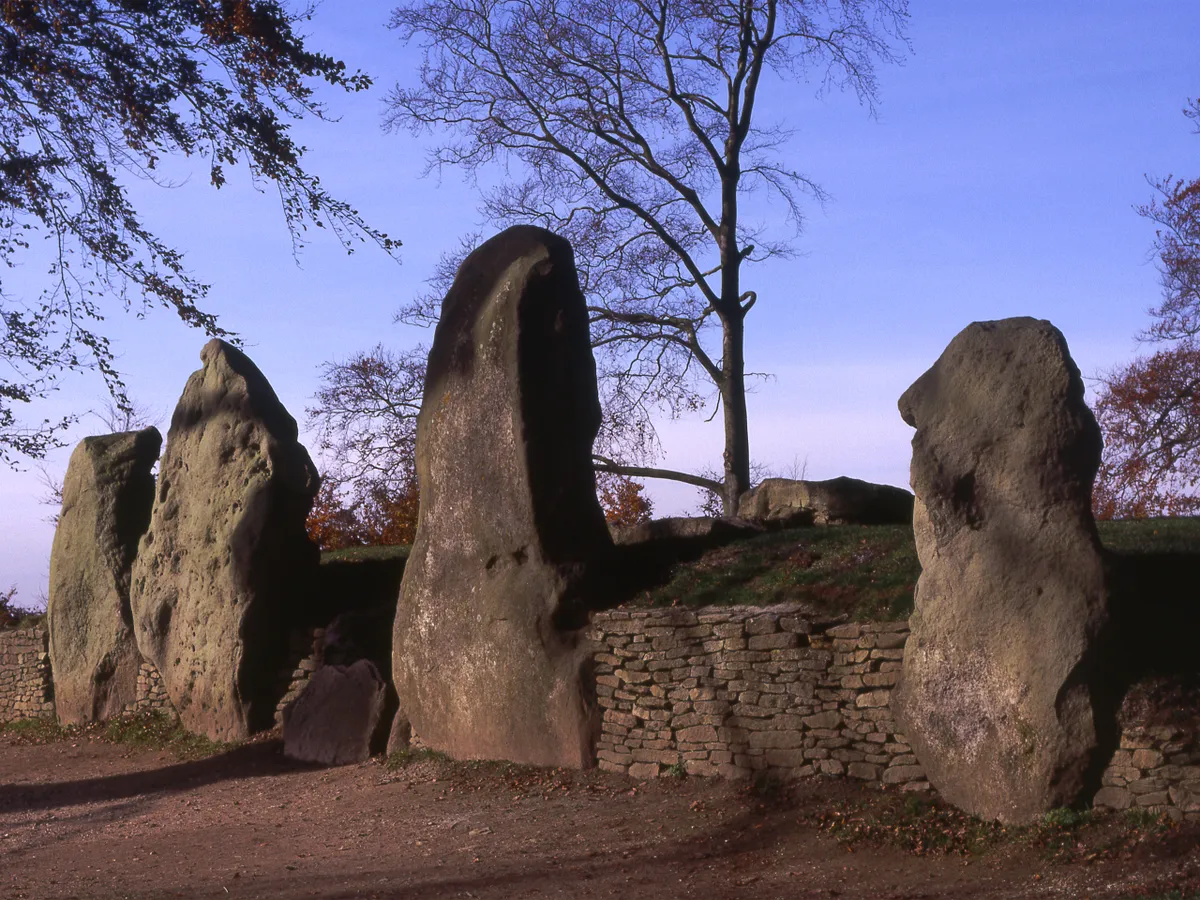In 2014, a Wiltshire farmer caused surprise by winning planning permission to build a burial mound that could house the remains of up to 2,400 people.
Here is our historic guide to the best long barrows to visit in Britain, including a brief look at the history of each one.
What is a long barrow?
Most long barrows, also known as chambered tombs, are thousands of years old and date back to the Neolithic period, around 4,000 to 2,400 BC. Many were constructed with individual chambers to house remains, and the laying to rest of bones here marked the end of an extensive ritual of burial rites. It’s generally believed that those incarcerated in burial mounds were of a high social status, but a lack of grave goods uncovered in them makes this hard to verify.
As places with such a rich human history, Long Barrows have plenty to tell us about the people who are buried there and their relationship with the land they lived on. Many are built on relatively flat and easily accessible land, so have been excavated and preserved, and are often open to the public.
Where to see long barrows in Britain
Gussage Down, Dorset
These long barrows may not be as spectacular as others, but their relationship to the Dorset Cursus that makes them incredibly special. Curcuses consist of long raised banks and ditches that archaeologists believe may have formed ceremonial routes. The Dorset and Stonehenge curcues are two of the most substantial remaining. The Dorset cursus and long barrows were built during the same period and the location and alignment of them suggests they had a common ritual significance.
West Kennet Long Barrow, Wiltshire

Located in Avebury not far from the ritual circles, West Kennet is one of the best-preserved and most impressive long barrows in Britain. Inside the chambered tomb the cremations and partial remains of a least 46 men, women and children have been uncovered. Over the years the barrow has become covered with turf, but originally it would have had chalk sides and stood out against the landscape. At over 100 metres in length, it is second only to the nearby East Kennet barrow, which is even longer.
Wayland’s Smithy, Oxfordshire

Legend once had it that the Saxon smith-god Wayland inhabited this chambered barrow. Holding the remains of 14 people whose deaths are a mystery, Wayland’s Smithy was open for around 40 years between 3590 and 3550 BC. The site was subsequently reopened, however, in 3460 and 3400 BC for another mound to be constructed on top. It's the remains of this larger barrow that visitors are able to explore today.
Street House Long Barrow, North Yorkshire
Street House long barrow is thought to consist of an early Neolithic cairn that’s overlaid by an early Bronze Age burial structure. There’s no longer much of a barrow here, but stonewalls and outlines in the ground are still visible. The surrounding countryside is open and flat, suggesting that the burial site would have once been visible from far around.
Stoney Littleton Long Barrow, Somerset
At 30-metres long the barrow at Stoney Littleton is comparatively smaller than some others but no less impressive. It consists of multiple side chambers, which you are able to view, and its seven-chamber arrangement is the only known one of its kind in Britain. During the 18th Century most of the barrow’s contents were stolen and very little is known about the number or type of people incarcerated there. Nevertheless, there are some records of excavations during the 19th Century that record the discovery of burnt bones and two or three partial skeletons on the site.
Pipton Long Barrow, Powys
A much smaller barrow with only a few rocks and a grassy mound remaining above ground, this cairn is now tucked away beside a field boundary with a view out over the Brecon Beacons. This barrow is believed to cover older structures with their own burial chambers. As the site is on private land, permission should be obtained before making a visit.
Longman Hill Cairn, Aberdeenshire
Dating back to the Bronze Age, this long barrow sits on the crest of the hill and is a prominent feature on the horizon. Because of the low lying costal plains around it, from Longman Hill it’s possible to see as far out as Moray Firth.
Sutton Hoo, Suffolk
An Anglo-Saxon burial site, Sutton Hoo’s flat land is dotted with burial mounds. Excavation has uncovered evidence of what appears to be warrior burials, including one thought to be East-Anglian King Raedwald. Situated close to the river Deben, this is one of the most extensive burial sites to be discovered in Britain. Sutton Hoo is cared for by the National Trust and also includes an exhibition hall, café and gift shop.
Coldrum Long Barrow, Kent
A distinctive oval of stones marks the mound of Coldrum Long Barrow. The least damaged of its kind in Kent, the barrow faces East towards the River Medway from a ridge running adjacent to the North Downs. Twenty skeletons have been unearthed from the tomb, and every year on May Day the local Hartley Morris Men visit the stones to sing up and dance up the sun.
Heston Brake Long Barrow, Monmouthshire
The only visible remnants of Heston Brake are a small group of stones, but these conceal a great amount of history beneath the ground. When excavation took place, two chambers were discovered which contained the bones of an ox in addition to human remains. The chamber to the West was built in the shape of a horseshoe and it's still possible to make out the shape of it in the ground.